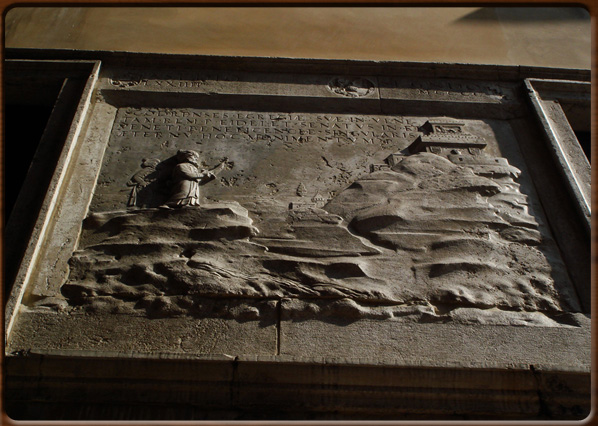
Mehmed II besieges Scutari, rilief 1474, front of the ex Scola degli Albanesi

No video
With the Peace of Turin in 1381 which brought an end to the War of Chioggia between Genoa and Venice, the peace treaty required that Venice cede Dalmatia to Hungary despite having won the war. However Venice was compensated for this by the annexation of many other possessions, among them several Albanian ports: Durres (Durazzo) in 1392, Shkodra (Scutari) in 1396, Alessio and Divastro in 1403.
Many Albanians (mostly merchants) emigrated to Venice around the mid 14th Century due to political instability in Albania.
Venice, after the decimation of much of its population due to fever and the War of Chioggia, was generally pleased to welcome these new immigrants, as a new source of sailors and mercenaries, known as “stradioti”. These Balkan/Dalmatian fighters were renowned for their audacity and were mostly light cavalry, fast and effective in their attacks and therefore much appreciated by those who engaged their services. Most of them came from the Peloponnese peninsula in Greece, at the time called Morea, where many Albanians had settled. So valuable were these mercenaries that over the decades and centuries that followed the Republic of Venice and the Kingdom of Naples vied against each other in their attempts to enrol their services. While the Albanian leaders gradually received concessions of land in the South, leading to the “Albanian-sounding islands” that still exist in southern Italy, no major stable foreign settlements were created in Venetian territory.
In 1388 the Serenissima permitted other Albanian immigrants to arrive on ships from Ragusa in Dalmatia, owing to their Catholic confession. However, they had to be more than ten years of age and pay six ducats to cross the Adriatic from Dulcigno in Montenegro. As an alternative to paying the six ducats, they undertook to work for the Venetian state for at least 4 years free of charge. But the influx failed to meet the needs of the city and so the Senate decided to lower the price of sea passage to four ducats and the duration of the work alternative to two years.
In 1479, another small Albanian community settled in the town of Gradisca, when six hundred (450 men and 150 women) fled the territory of the Venetian Republic having survived the Turks’ siege of their town, Shkodra (Scutari).
1300 - 1400 - - rev. 0.1.5